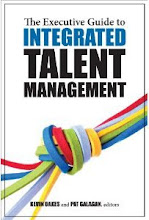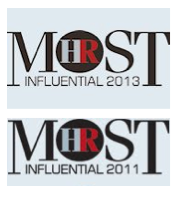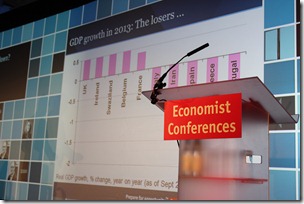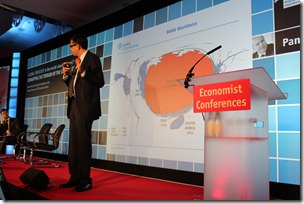 So I may have missed the Singapore human capital summit this week but I am 0000attending the Economist’s high growth markets summit today. And we’ve not been talking specifically about Singapore, but obviously have been focusing fairly heavily on Asia.
So I may have missed the Singapore human capital summit this week but I am 0000attending the Economist’s high growth markets summit today. And we’ve not been talking specifically about Singapore, but obviously have been focusing fairly heavily on Asia.
The Economist’s Robert Ward (above) set the scene, comparing the sluggish performance of Europe in particular, and especially Greece’s collapse loosing 20% of its economy over the last six years with China’s growth of 50% over the same period.
The not-so-goods (you can work out the countries behind the podium):
The star performers (followed by Mozambique, Laos, Rawanda and Ghana):
Looking forward, Europe is expecting 0.4% growth in 2013. The US will be performing better, but is heading to a fiscal cliff at the end of 2012. Compare this to China’s expected growth of 7 to 8%. The session on China later this morning suggested that this was a soft landing, but that further big challenges remain ahead.
In fact the best economic prospects are in Sub Saharan Africa. The rest of the world is hanging in the breeze, including the rest of Asia and the Middle East.
So, we should all be trying to do more work in some of these higher growth markets, shouldn’t we.
IESE’s Pankaj Ghemawat scribed some of the challenges faced by countries and companies in doing this. Firstly, you can’t just look at economics, but also need to think about cultural, administrative and geographical factors.. A country’s trade with another nation is generally about double what it would otherwise be if 1. they share a common language (+103%); 2. they are in the same trade block (+96%); 3. there’s been a history of one colonising the other (+110%) and 4. there’s a common land border (+78%).
So you can look at Wal-mart for example. In the same year that the company’s CEO suggested that moving from Arkansas to Alabama was the same sort of challenge as moving to Argentina, Ghemawat’s analysis suggest its only really successful expansions were to those countries sharing a common bond of English; being part of NAFTA or the same country (Puerto Rico) or sharing a land border.
Wal-mart’s figured it out since then (really? – I’m still a bit worried about its use of the ‘cheer’ outside the US).
Many companies haven’t yet learnt these lessons yet. Eg BMW is one of the very few companies that earns over 20% of its revenues from each of North America, Europe and Asia. But 73% of its workforce and close to 90% of its management are German. That country’s engineering based culture won’t necessarily be the one the company needs to respond to the issues it’ll face in emerging markets.
It’s a good and very well argued point and although I still remain cautious about relying on national stereotypes (see my last post), stereotypes exist for a reason, and the more diverse we make our workforces and particularly top management, generally the more successful we’ll be.
Any thoughts on these points from anyone else out there, particularly those attending the conference either physically or virtually (since the sessions were being live streamed)?
I’d be particularly interested in the perspectives of the other HR / L&D folk attending the conference, eg James Cullens from Hays; Mazzy Cameron from Henderson Global Investors; Patrick Casseday from Schneider Electric; Jane Ferris from BA and William Scott Jackson from Oxford Consulting. Any thoughts from all of you?
I’ll share some of my own thinking on this agenda when I speak at, and blog from, the Emerging Markets HR Summit in London in December!
- Consulting - Research - Speaking - Training - Writing
- Strategy - Talent - Engagement - Change and OD
- Contact me to create more value for your business
- jon [dot] ingham [at] strategic [dash] hcm [dot] com
.



































0 comments:
Post a Comment
Please add your comment here (email me your comments if you have trouble and I will put them up for you)